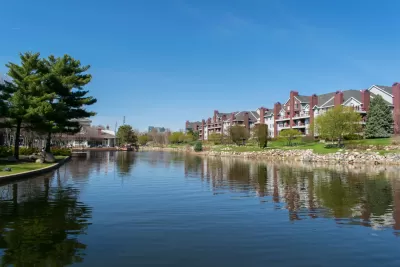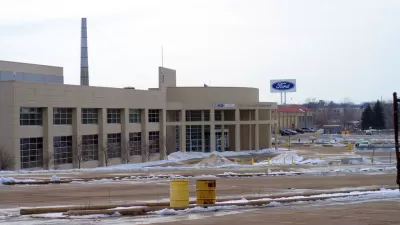The city of Edina, Minnesota, provides an example of the suburban reaction to a wave of multi-family residential construction.

Burl Gilyard repots from Edina, Minnesota, where the city of 51,000 mostly affluent residents has been wrestling with a high-rise development that would add two 20-story-plus towers—the city's first condo project in over a decade.
The 170-unit project met initial interest from potential buyers—the project "was designed to appeal to Edina empty-nesters who wanted to stay in the city but didn’t have other appealing options," according to Gilyard. "It also was designed to appeal to the general public: The Estelle included pedestrian-friendly design elements at the ground level with 'walkable tree-lined interior streets, plazas, green space and generous setbacks from France and 69th,'' according to a press release from the development team."
Alas, the project triggered a loud group of opponents—residents of the residential neighborhood west of the proposed development. An amendment to the city's comprehensive plan that would have allowed for the development failed to pass through the Edina City Council during on October hearing.
Gilyard shares that anecdote as an opening for a larger discussion about density in the Twin Cities region, where the regional Metropolitan Council has been tracking a large increase in the number of multi-family units under constriction in recent years.
Edina, however, could be considered a front line of sorts in the battle over density, and an excellent case study for other affluent residential suburbs located near the urban core of growing regions.
Perhaps nowhere is the conflict more publicly evident than in Edina, a first-ring suburb that borders Minneapolis to the west. Since 2014, more than 900 new multifamily units have been added in Edina. Nearly 700 apartments are currently under construction, and more than 900 additional units have been proposed there. Edina ranked eighth in the metro for the total number of multifamily units permitted between 2014 and 2016.
FULL STORY: Edina struggles with the ‘d-word’ — density

Alabama: Trump Terminates Settlements for Black Communities Harmed By Raw Sewage
Trump deemed the landmark civil rights agreement “illegal DEI and environmental justice policy.”

Study: Maui’s Plan to Convert Vacation Rentals to Long-Term Housing Could Cause Nearly $1 Billion Economic Loss
The plan would reduce visitor accommodation by 25% resulting in 1,900 jobs lost.

Planetizen Federal Action Tracker
A weekly monitor of how Trump’s orders and actions are impacting planners and planning in America.

Waymo Gets Permission to Map SF’s Market Street
If allowed to operate on the traffic-restricted street, Waymo’s autonomous taxis would have a leg up over ride-hailing competitors — and counter the city’s efforts to grow bike and pedestrian on the thoroughfare.

Parklet Symposium Highlights the Success of Shared Spaces
Parklets got a boost during the Covid-19 pandemic, when the concept was translated to outdoor dining programs that offered restaurants a lifeline during the shutdown.

Federal Homelessness Agency Places Entire Staff on Leave
The U.S. Interagency Council on Homelessness is the only federal agency dedicated to preventing and ending homelessness.
Urban Design for Planners 1: Software Tools
This six-course series explores essential urban design concepts using open source software and equips planners with the tools they need to participate fully in the urban design process.
Planning for Universal Design
Learn the tools for implementing Universal Design in planning regulations.
Caltrans
Smith Gee Studio
Institute for Housing and Urban Development Studies (IHS)
City of Grandview
Harvard GSD Executive Education
Toledo-Lucas County Plan Commissions
Salt Lake City
NYU Wagner Graduate School of Public Service





























